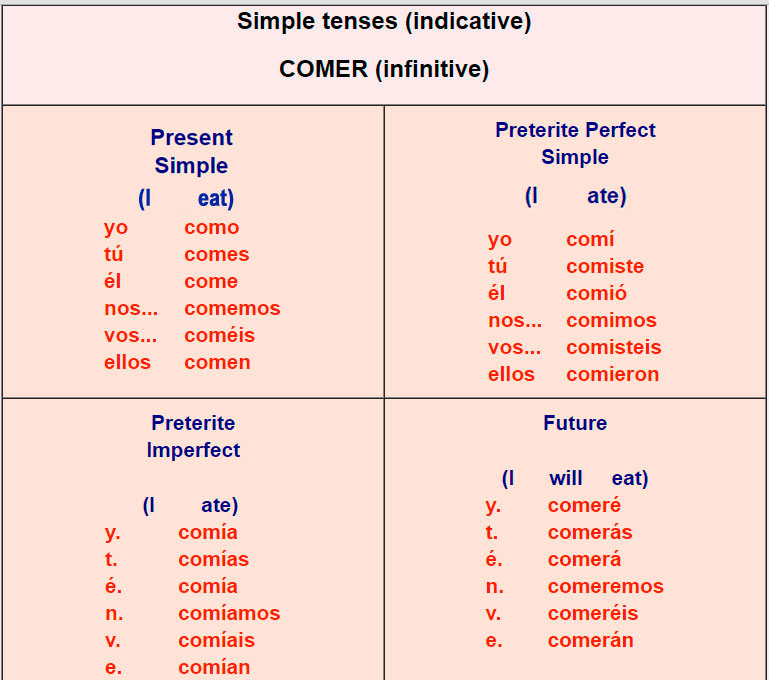

It's very important you'll be seeing a lot of it as you study Spanish. doesn't mean they. Its just in the ellos / ellas box because the verb endings are the same. in the él / ella box just to simplify things, not because it means he or she. Likewise, remember that Uds. Therefore its much easier to compact the endings into six box grids, like this:īut remember that were putting the the Ud. Notice how the usted endings are all the same as the él / ella endings? And how the ustedes endings are all the same as the ellos / ellas endings? Thats not only true of present tense verb endings its true of all the other tenses as well. Why? Because theyre slightly more complicated than they need to be. You wont often see verb charts like the ones shown above. Same thing if you say "Nosotros viven" in Spanish. If you say "I has a ladder" in English, people will look at your funny.

How about an -ir verb? Vivir means to live. Lets use it to say We live. The stem is viv, the ending is -imos, and the subject is nosotros:įailing to conjugate verbs correctly sounds just as bad in Spanish as it does in English. (Remember we're pulling the ending from the -er chart because correr is an -er verb.) The stem is corr. The ending (from the -er chart) is -es. Add a subject pronoun and we get:

The infinitive correr means to run. Lets use it to say You run. (In this case the you will be a singular, informal you.) Here all all three (present tense) charts together. OK, so what about -er and -ir verbs? We will follow the same procedure but we need to use different charts. The infinitive dibujar means to draw. How do we conjugate it to mean we draw? Strip off the ending, identify the subject pronoun ( nosostros), and add the appropriate ending ("-amos") to the stem ("dibuj"): Since our subject is yo, we'll add the verb ending "-o" to our stem ("habl"): We need to find the ending that corresponds with our subject. Notice how each box on the subject pronouns chart corresponds to a box on the verb endings chart. (Remember we're using "-ar" verb charts because hablar is an "-ar" verb.) To the left are subject pronouns once again. The present tense "-ar" verb endings are listed in a chart below, to the right. Now we need to look up (or better yet, memorize) the appropriate chart of verb endings. The stem of hablar is "habl" and the ending is "-ar": A good dictionary will tell us that "to speak" is hablar in Spanish. The next step is finding the infinitive we need and breaking it into two parts: the stem and the ending. So we'll need to use yo (I) as our subject. Heres a quick reminder of possible subject pronouns from the previous lesson: The first step is identifying the subject. Imagine that we wanted to say "I speak" in Spanish. Unlike English infinitives, Spanish infinitives are only one word, but theyre still pretty easy to spot. Notice how there is no indication as to what the subject of an infinitive is: English infinitives include the word to. Check out the chart below and compare the infinitives to some conjugated counterparts. InfinitivesĪ non-conjugated verb is known as an infinitive. Since there is no subject specified, an infinitive has infinite conjugation possibilities. Youll need to stop and think every time, and practice, practice, practice until it becomes second nature. Conjugating verbs in Spanish, however, will not come easily. If you've grown up speaking English you can conjugate verbs without even thinking about it it just comes naturally. It sounds funny when a verb is conjugated incorrectly: Poor verb conjugation was just one of the XFL's many problems.


 0 kommentar(er)
0 kommentar(er)
